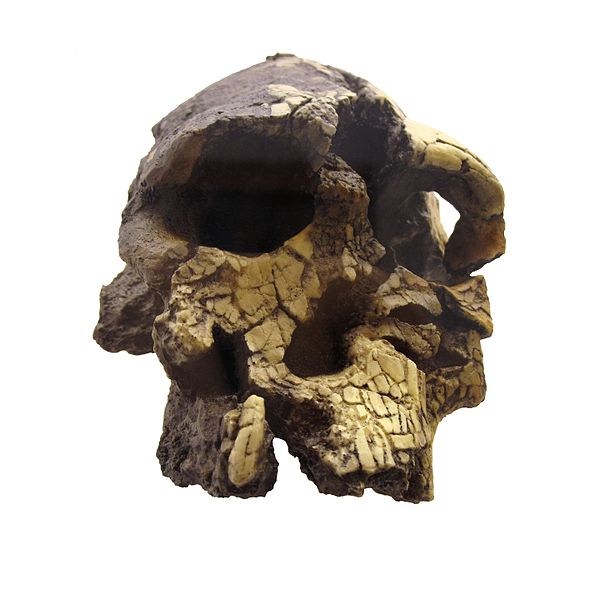Kenyanthropus is a genus of extinct hominin identified from the Lomekwi site by Lake Turkana, Kenya, dated to 3.3 to 3.2 million years ago during the Middle Pliocene. It contains one species, K. platyops, but may also include the 2 million year old Homo rudolfensis, or K. rudolfensis. Before its naming in 2001, Australopithecus afarensis was widely regarded as the only australopithecine to exist during the Middle Pliocene, but Kenyanthropus evinces a greater diversity than once acknowledged. Kenyanthropus is most recognisable by an unusually flat face and small teeth for such an early hominin, with values on the extremes or beyond the range of variation for australopithecines in regard to these features. Multiple australopithecine species may have coexisted by foraging for different food items, which may be reason why these apes anatomically differ in features related to chewing.
Kenyanthropus
Kenyanthropus was contemporary with A. afarensis ("Lucy" above)
Image: Kenyanthropus platyops IMG 2945 white
Image: Kenyanthropus platyops IMG 2946 white
Lomekwi is an archaeological site located on the west bank of Turkana Lake in Kenya. It is an important milestone in the history of human archaeology. An archaeological team from Stony Brook University in the United States discovered traces of Lomekwi by chance in July 2011, and made substantial progress four years after in-depth excavations.
Lomekwi is near the west bank of Lake Turkana, which is pictured in green on this satellite image.





